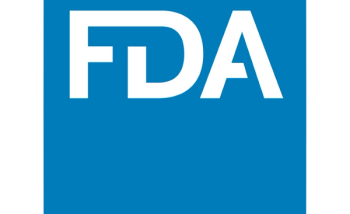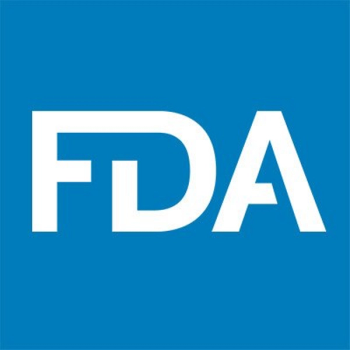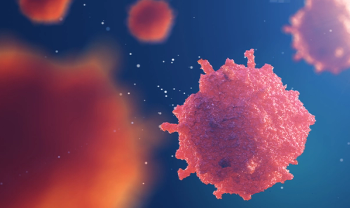
- Managed Healthcare Executive November 2018 Issue
- Volume 28
- Issue 11
CAR T-cell Therapy: How Payers are Responding to Huge Price Tags
This revolutionary therapy raises serious financial questions. Here’s how much it costs, and how payers are responding.
CAR T-cell therapy is a new cancer treatment that’s already saving lives. But it comes with significant costs.
Yescarta (axicabtagene ciloleucel), approved by the FDA for adult patients with relapsed or refractory large B-cell lymphoma after two or more lines of systemic therapy, racks up $373,000 per treatment. Kymriah (tisagenlecleucel), approved for patients up to 25 years of age with B-cell precursor acute lymphoblastic leukemia that’s refractory or in second or later relapse, amounts to $475,000 per treatment.
Related article:
There’s also additional costs to consider, such as responding to adverse events that can occur, which can include ICU visits to treat symptoms associated with cytokine release syndrome and administering and monitoring treatments. Those costs can reach up to $1 million, according to experts.
Cytokine release syndrome can cause fever, nausea, headache, rash, rapid heartbeat, low blood pressure, and trouble breathing. While most patients have a mild reaction, other patients can have a severe response to the treatment, and some may even die, according to the National Cancer Institute.
Costs aside, Frederick Locke, MD, a medical oncologist and translational researcher at Moffitt Cancer Center in Tampa, Florida, enthuses that, with a single infusion of CAR T cells, 83% of patients in the ZUMA-1 clinical trial for the treatment of patients with chemorefractory-aggressive B-cell non-Hodgkin lymphoma had a measureable response with Yescarta. More than 50% experienced a complete disappearance of their lymphoma. Even more promising, after a median follow-up at nearly nine months, 44% of those patients whose lymphoma had disappeared remained in remission. Locke was a principal investigator for the clinical trial.
The 101 patients included in the trial had tumors that were growing, despite chemotherapy treatments, prior to the new treatment. It’s likely that these patients wouldn’t have lived more than six months, says Locke. And even more remarkable, the patients, prior to the new treatment, stood less than a one in 10 chance of having their lymphoma disappear.
In June, Novartis
The company highlighted that patients had a 65% chance of being disease-free one year after onset of response; 54% of patients who initially achieved a partial response later experienced a complete response. In addition, response rates remained consistent with previous reports and the safety profile was maintained with no emergence of new safety signals, according to Novartis.
Upfront investment required
The cost to develop in-house capabilities to administer these immunotherapies can be significant. Providing the therapy requires removing cells from patients and then having them shipped properly to a facility where they can be combined with the CAR T-cell product. Then the healthcare facility needs to be able to receive the final CAR T-cell product, which involves having experts who understand cellular therapy. Preparation of the treatment also requires the ability to properly freeze and thaw cells.
Related article:
For this reason, providers of CAR T-cell therapy must make significant infrastructure investments and secure the appropriate clinical and administrative expertise, says Locke. Facilities and physician groups that have similar expertise already, such as with stem-cell transplants, will be able to launch these therapies more quickly and more easily, he says.
Healthcare facilities involved in CAR T-cell therapy also need to invest in the care to treat patients’ side effects. They need physicians who are familiar with the therapy and nurses who know how to manage the toxicities associated with CAR T-cell treatments, says Locke. Facilities also need to be able to retain databases on patient outcomes. Alternatively, they could contract this work out to a blood marrow treatment center, he says.
Related article:
Providers should also recognize the need for accreditation. TheASCOPost
Legal and risk-management teams at provider organizations also need to be involved, because delivering this treatment requires risk assessment, he says. Legal teams need to ensure that patient confidentiality is maintained, and that the organization is protected if that information is breached. Issues can also occur when transferring a patient’s cells between a healthcare facility and the facility where their cells are combined with the drug product, or when the product is returned to the facility where the treatment is administered to the patient, says Locke.
Payers take patient-specific approach
Reimbursement and billing of these treatments is complex. “It requires a lot of process development and handling hand-offs [between team members]. It’s more than simply buying and administering a drug,” says Locke. “A lot of engagement needs to [take place] between clinicians, coding, billing, and collections.”
And that’s in addition to engagement with legal teams on negotiating contracts associated with these treatments.
Payer and provider representatives say organizations typically coordinate payment for this treatment with customized agreements on a per-patient basis.
Deirdre Saulet, a consultant at the Advisory Board Company, agrees. “My sense is that the vast majority of private payers are paying for this. It’s just burdensome,” she says.
As CAR T-cell therapy momentum grows, payers are approving the therapy more quickly, says Saulet. When she started talking to providers about their experience with payers in February, it took them many weeks to secure approval; now it’s taking three to four weeks, she says.
Related article:
Still Saulet says it could take regional payers-specifically, those without the depth of expertise covering CAR T-cell therapies-longer to negotiate these per-patient agreements with providers.
Providers that have secured timely coverage of this treatment have been transparent about the cost to treat previous patients, she says. But most providers don’t have the volume of patients to provide an average estimate of treatment costs, which include the cost of the pharmaceutical company’s product, in addition to hospitalizations and supportive care. In fact, most of the provider organizations Saulet has talked to have only provided CAR T-cell therapy to between five to 10 patients.
Saulet says one of the provider organizations she works with has been providing the treatment to Medicaid patients free of charge. While she says that’s an admirable thing to do, it’s not sustainable for the long term.
Broader uses
Jennie Crews, MD, a medical oncologist at the
Crews is also interested in the ability to combine CAR T-cell therapy with other expensive treatments, such as checkpoint inhibitors. That’s because combining the therapies would help oncologists engage more effectively with the immune system, she says.
Related article:
Also on Crews’ radar is efforts to develop
The off-the-shelf CAR T-cell product wouldn’t require the use of an individual patient’s cells to tailor the therapy on a per-patient basis. Instead, it would use genetically modified T cells from a healthy donor, which could then be used to treat patients.
Articles in this issue
about 7 years ago
Looser Restrictions on HRAs on the Horizonabout 7 years ago
Nine Ways to Deal with Escalating Drug Costsabout 7 years ago
Time to Address ‘Financial Toxicity’ of Cancer Treatmentabout 7 years ago
Medical Foods Strive for Insurance Coverageabout 7 years ago
New Chiefs at MCOs: 4 Positions You May Want to Addabout 7 years ago
Eight Predictions for Cancer Care in 10 Yearsabout 7 years ago
Eight Top Oncology Drug Approvalsover 7 years ago
Is Precision Medicine Worth the Hype? Oncologists Weigh InNewsletter
Get the latest industry news, event updates, and more from Managed healthcare Executive.






















































